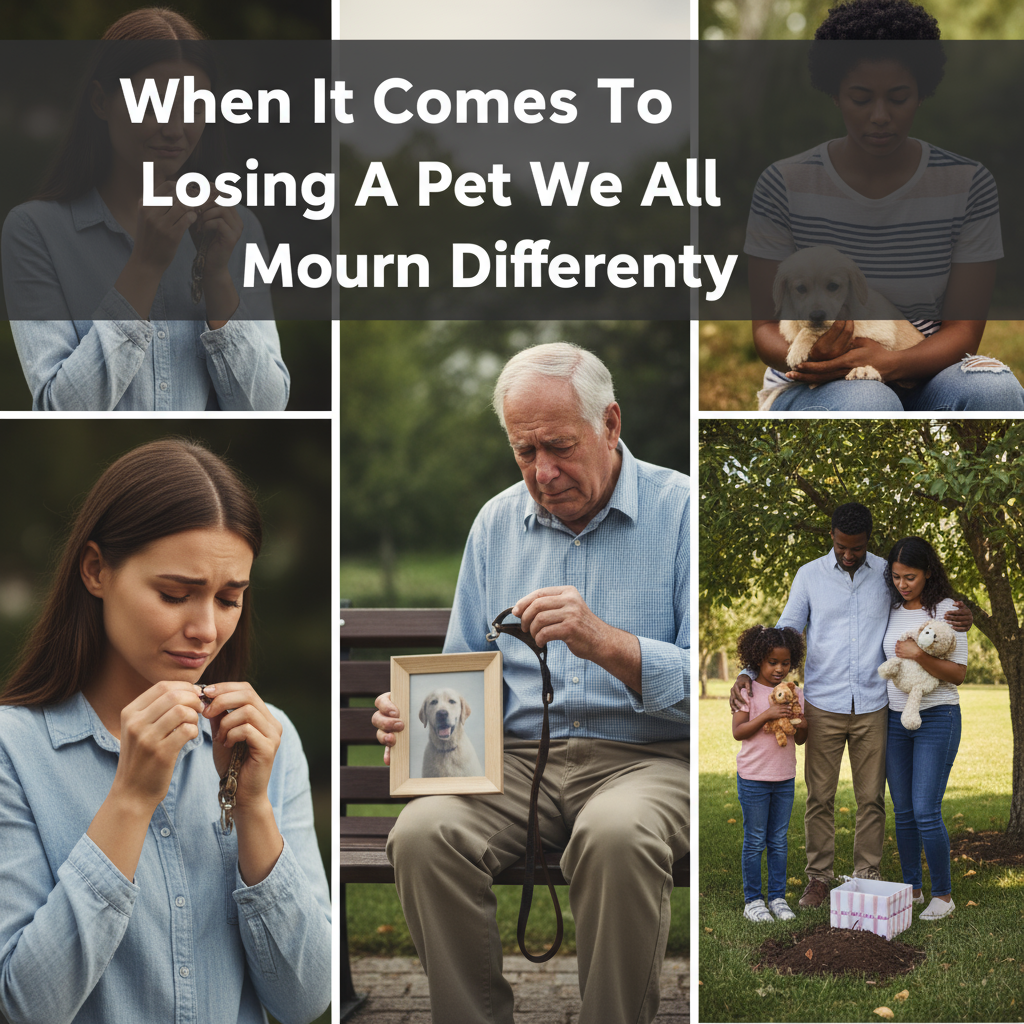When It Comes to Losing a Pet We All Mourn Differently, And That’s OK
Estimated Reading Time: 6 minutes
- The grief of losing a pet varies widely among individuals.
- Emotional and behavioral responses can differ significantly.
- Grief is a non-linear process that requires patience and understanding.
- Support from friends and family is crucial for coping.
- Acknowledge the unique aspects of each person’s mourning experience.
Table of Contents
The Diversity of Mourning in Pet Loss
When we lose a beloved pet, the emotional fallout can be quite complex. Each person’s reaction to this loss is heavily influenced by their unique circumstances and backgrounds. Factors like the strength of the bond with the pet, previous experiences with loss, and personal coping styles contribute to the overall grief experience.
Emotional Responses to Pet Loss
Emotional responses to losing a pet vary widely, encompassing feelings of denial, shock, tearfulness, guilt, anger, irritability, loss of appetite, and even depression. The impact of these emotions can linger for days, weeks, or sometimes even months (source, source). For some individuals, it may be difficult to segregate their grief from other aspects of their lives, leading to intertwining emotional and behavioral responses that can complicate the grieving process.
Behavioral Responses
Our emotional reactions are often mirrored by behavioral changes. Many pet owners find themselves engaging in various behaviors that reflect their grief, such as sleeping with their pet’s blanket, maintaining their pet’s belongings in the home, or creating memorials to honor their pet’s life. These actions serve as an emotional anchor, allowing individuals to maintain a connection with their deceased companion (source).
The Bond with Pets
A defining factor in the experience of pet loss is the emotional attachment that pets inspire. According to attachment theory, the bonds formed between humans and pets can be as profound as those formed with fellow humans. This emotional connection means that when a pet passes, the grief can manifest similarly to the loss of a human loved one (source).
Grief as a Non-Linear Process
It’s important to understand that grief is not a straightforward journey. Many people experience it as a series of waves, where good days can alternate with deep sorrow. While individuals may cycle through various stages of grief — such as denial, anger, bargaining, depression, and acceptance — these stages do not occur in a linear fashion (source). Recognizing this fluidity is crucial for both the grieving individual and those offering support.
Coping Mechanisms
Coping with the loss of a pet involves several steps that might include acknowledging the reality of the death, confronting the pain, and finding ways to continue the relationship through cherished memories (source). Adjusting one’s self-identity post-loss is also vital, as pets often play significant roles in shaping our daily lives. Seeking support from friends, family, or support groups can provide much-needed comfort during this challenging time (source, source).
Societal Perception and Support
As societal awareness of grief over pet loss grows, the acknowledgment of this type of mourning is becoming more common. However, some individuals still face skepticism or dismissal from those who do not understand the depth of their feelings. Industry experts stress that grief for a pet is a natural and normal response, and support from others can significantly impact how one navigates this difficult experience (source).
Individual Differences
Each person’s experience with pet loss is shaped by numerous factors, including previous experiences with loss, individual relationships, and life circumstances. Recognizing the uniqueness of each grieving process is important. Experts emphasize that there is no “right” way to mourn a pet (source, source). Embracing this diversity in mourning allows both individuals and society to better support those who are experiencing grief.
Supporting Others in Their Grief
If you know someone who is grieving the loss of a pet, it’s essential to approach the situation with understanding and compassion. Here are practical steps to help support someone during this tough time:
- Listen: Offering a listening ear can be incredibly comforting. Allow them to express their feelings without interruption or judgment.
- Acknowledge Their Grief: Validate their emotions by acknowledging that it is normal to grieve over the loss of a companion animal.
- Share Memories: Encourage them to share stories or memories of their pet. This can help keep the pet’s memory alive in a positive way.
- Offer Practical Support: Sometimes, individuals may need practical help, such as assistance with memorial arrangements or simply spending time together as they navigate their grief.
- Be Patient: Grieving is a process that takes time. Be there for them without pressure to “get over it” quickly.
Final Thoughts
Losing a pet is a uniquely personal journey filled with profound emotions and experiences. The diversity of mourning is an essential aspect of the grieving process that should be recognized and validated. By understanding the varied emotional and behavioral responses to pet loss, the strong human-animal bond, and the intricate nuances of grief, we can create a more supportive environment for those who have experienced this heart-wrenching loss. Each person’s journey is valid, and acknowledging this diversity not only promotes healing but fosters a deeper understanding of pet loss in our communities.
For more pet care tips and guides, visit Pet Blog.
